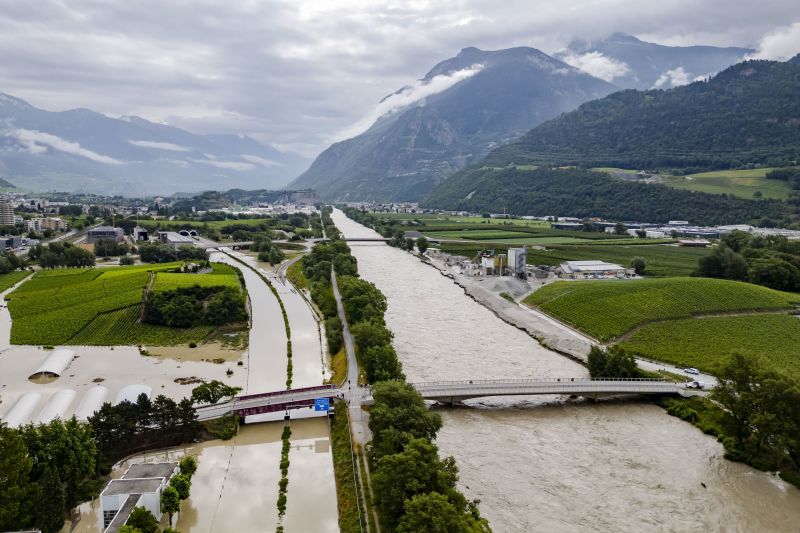The tranquility of Southern Switzerland was shattered by a heavy deluge that has unfortunately led to widespread despair in the region. Unprecedented rainfall led to severe flooding that claimed at least four lives and left one person missing. The calamity of such magnitude has not only taken a toll on the human resources but left a lasting impact on the topography and infrastructure of the region.
Over a short period, heavy rains drenched southern Switzerland causing rivers to swell, dams to overflow, and landslides that blocked roads. The torrential downpour transformed the typically serene Swiss countryside into a scene of chaos and destruction. Local authorities are calling it one of the worst natural disasters the area has experienced in many years.
One of the victims was reportedly swept away by rushing water while attempting to empty a basement filled with floodwater. The other three victims included two women and a man, who were caught off guard by the rapid escalation of the flooding. In addition, one person is unaccounted for, having disappeared at the height of the catastrophe. Searches and rescue missions by the local authorities and the Swiss army are currently ongoing, further highlighting the urgent situation on the ground.
The relentless rain transfigured much of southern Switzerland into an enormous waterway. Orchard fields transformed into lakes, streets into rivers, and towns looked more like islands. The flooding has not just led to loss of life, but has also caused significant structural damage. Houses, bridges, and roads have been severely affected and it will require extensive rollback and reconstruction efforts.
Even as the locals grapple with the immediate aftermath of the flooding, the situation is complicated by land and mudslides triggered by the heavy rainfall. The steep terrain which characterizes most of Southern Switzerland makes landslides a real risk during extreme rain events. Throughout the region, landslides have been reported, leading to further infrastructural damage and imposing a daunting challenge for the recovery operations.
The geographic positioning of Southern Switzerland has traditionally sheltered it from such storms and masses of water. Historically, flooding of this extremity is uncommon in this region, making it a rare and distressing occurrence for the tight-knit communities that define the southern Swiss culture. This incident has prompted a broader discussion on whether the region is adequately equipped to handle such urgent and extreme climatic events, and whether this event could be a forerunner to similar issues connected to a shifting climate.
As the raging waters gradually subside, they leave in their wake a landscape marred by debris, displaced families, and broken infrastructure. The immediate focus of the officials is on providing relief to the affected locals, fixing the damaged infrastructure, and restoring life back to normalcy. Emergency services, including Red Cross and other NGOs, are tirelessly working alongside local communities, providing the much-needed support ranging from temporary shelter to food and medical aid.
In midst of the devastation, there has been an incredible display of community spirit. Neighbors are stepping in to help one another deal with the aftermath. Private citizens are volunteering their time and resources to aid in clean-up efforts. It is a daunting reminder that even though nature’s wrath can be overwhelming, the indomitable human spirit can always find a way to withstand and ultimately overcome such trials.
The southern Switzerland flooding is a brutal reminder of the force of nature, an event that stripped away the everyday calm of a region reputed for its peace and tranquility. The disaster has signaled the need for more robust and proactive actions plans aimed at dealing with such unpredictable meteorological events. As the region begins to peel away the layers of this disaster, each step taken towards rebuilding will serve as a testament to their resilience and unity.




